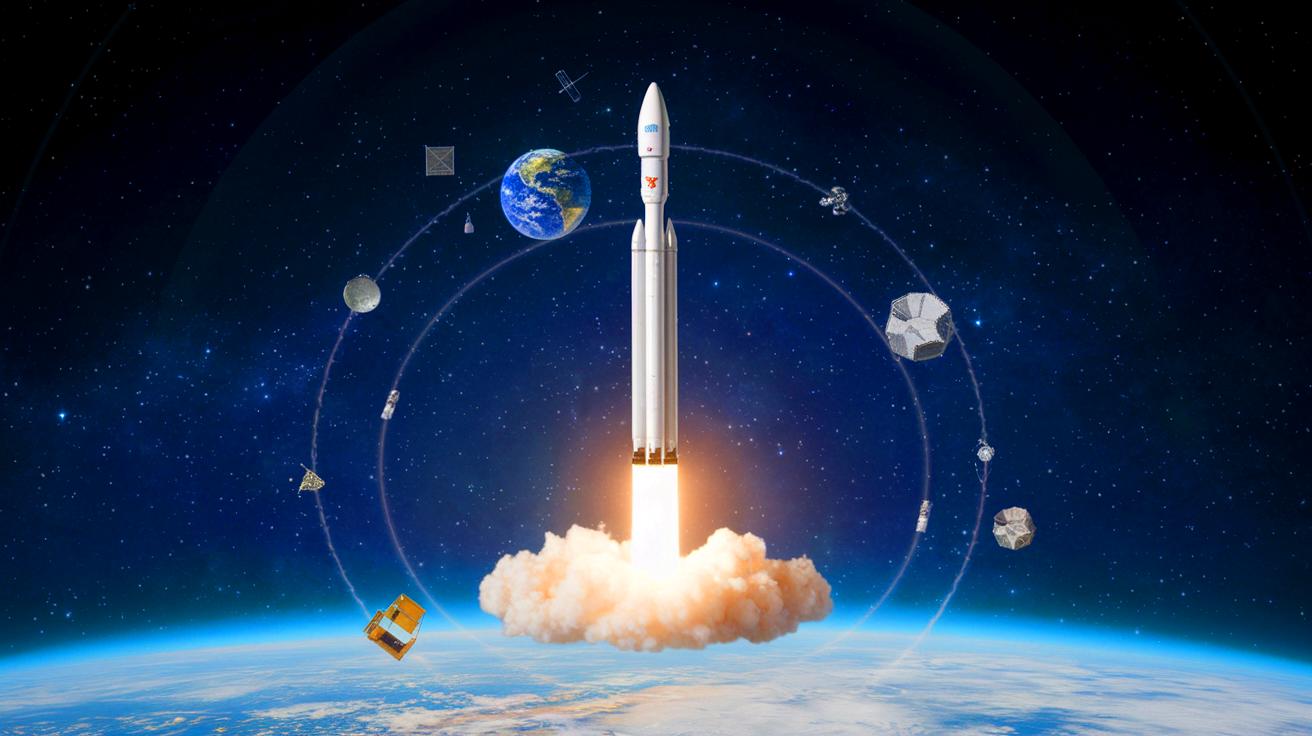IN A NUTSHELL
🚀 SpinLaunch aims to launch the ambitious Meridian Space constellation, potentially surpassing SpaceX’s satellite launch record.
💡 The company will initially use traditional rockets, while continuing to develop its innovative kinetic launch system.
📈 The Meridian Space constellation promises significantly higher broadband capacity compared to current market offerings.
🌍 SpinLaunch’s approach combines traditional and innovative methods to enhance cost-effectiveness and environmental sustainability in satellite launches.
The space industry is witnessing a groundbreaking shift as SpinLaunch unveils its ambitious plan to launch a staggering constellation of satellites, aiming to outpace even the giants of the sector. As the company known for its innovative centrifuge system embarks on this daring journey, it surprisingly turns to traditional rockets to kickstart its mission. What does this mean for the future of satellite launches, and how will SpinLaunch’s approach reshape the dynamics of space exploration?
SpinLaunch’s Revolutionary Satellite Constellation
SpinLaunch is setting its sights high with the development of the Meridian Space constellation, a new frontier in broadband satellite technology. This ambitious project aims to launch up to 250 microsatellites in a single mission, potentially shattering the current record held by SpaceX. Back in 2021, SpaceX’s Transporter-1 mission achieved a remarkable feat by launching 143 satellites, a record that now stands on the brink of being surpassed by SpinLaunch’s innovative endeavor.
Sustainability Reports: Key to Transparent and Responsible Management
The Meridian Space constellation promises to deliver superior broadband capacity, as highlighted by Eirik Lie, president of Kongsberg Defense & Aerospace. He emphasized that this new constellation would offer significantly higher capacity compared to existing market offerings. CEO David Wrenn of SpinLaunch further solidified this promise by ensuring that the satellites, developed in collaboration with NanoAvionics, provide a reliable foundation for scaling operations quickly and efficiently. This strategic alliance underscores SpinLaunch’s commitment to transforming satellite communications and setting new standards in the industry.
Will the Meridian Space Constellation Be Catapulted to Space?
SpinLaunch’s unique approach to satellite launching has attracted significant attention, with the company receiving $12 million in funding from Kongsberg NanoAvionics to support the development of the Meridian Space satellites. Despite the initial reliance on traditional rockets, SpinLaunch’s ultimate goal is to deploy its satellites using its revolutionary kinetic launch system. This system, which captured headlines in 2022 by launching a NASA payload into the sky, utilizes a centrifuge technology that promises cost-effectiveness and environmental benefits.
Miracle Down Under: Australian Patient Walks Free with Artificial Heart After 100+ Days
The company’s groundbreaking Suborbital Accelerator has demonstrated the potential of launching payloads at speeds reaching 5,000 mph. However, as SpinLaunch continues to refine its Orbital Launch system, the initial deployment will rely on conventional rocket technology. This dual-track strategy allows SpinLaunch to maintain independent risk profiles while proving the value and performance of its constellation early on. With the first on-orbit demonstrator poised for launch next year, the space community eagerly anticipates how SpinLaunch’s innovations will unfold and redefine the future of satellite deployment.
SpinLaunch Goes Traditional
The announcement of SpinLaunch’s pivot to traditional rockets sparked a wave of discussions across the space community. Eric Berger of Ars Technica expressed skepticism about the decision, questioning whether it signified a strategic shift or a necessary adaptation. In response, CEO David Wrenn clarified that the initial use of traditional rockets is a pragmatic step to accelerate the deployment of the constellation, while the kinetic launch technology continues to undergo development.
Sustainability Reports: Key to Transparent and Responsible Management
Wrenn emphasized that the orbital launch system and the deployment of the constellation are parallel endeavors, each with independent critical paths and risk profiles. This approach allows SpinLaunch to demonstrate value and performance early on, building towards its long-term vision of revolutionizing satellite launches. While questions remain about the timing of the Orbital Launch system’s readiness, SpinLaunch’s commitment to its kinetic launch technology remains unwavering, promising a future where satellites can be launched more efficiently and sustainably.
The Road Ahead for SpinLaunch
As SpinLaunch embarks on this ambitious journey, the road ahead is filled with both opportunities and challenges. The company’s original plan to operate its Orbital Launcher faced hurdles, yet its collaboration with Portland State University demonstrated the resilience of its technology. By proving that a CubeSat can endure the extreme G-forces required for its launch system, SpinLaunch showcased the potential of its innovative approach.
Despite the challenges, SpinLaunch’s vision of a future where satellite launches are more cost-effective and environmentally friendly remains compelling. With the continued development of its Orbital Launch system and the strategic deployment of traditional rockets, SpinLaunch is poised to make a significant impact in the space industry. How will SpinLaunch’s bold strategies and technological advancements influence the future of satellite launches, and what new frontiers will it explore next?
Did you like it? 4.6/5 (30)
